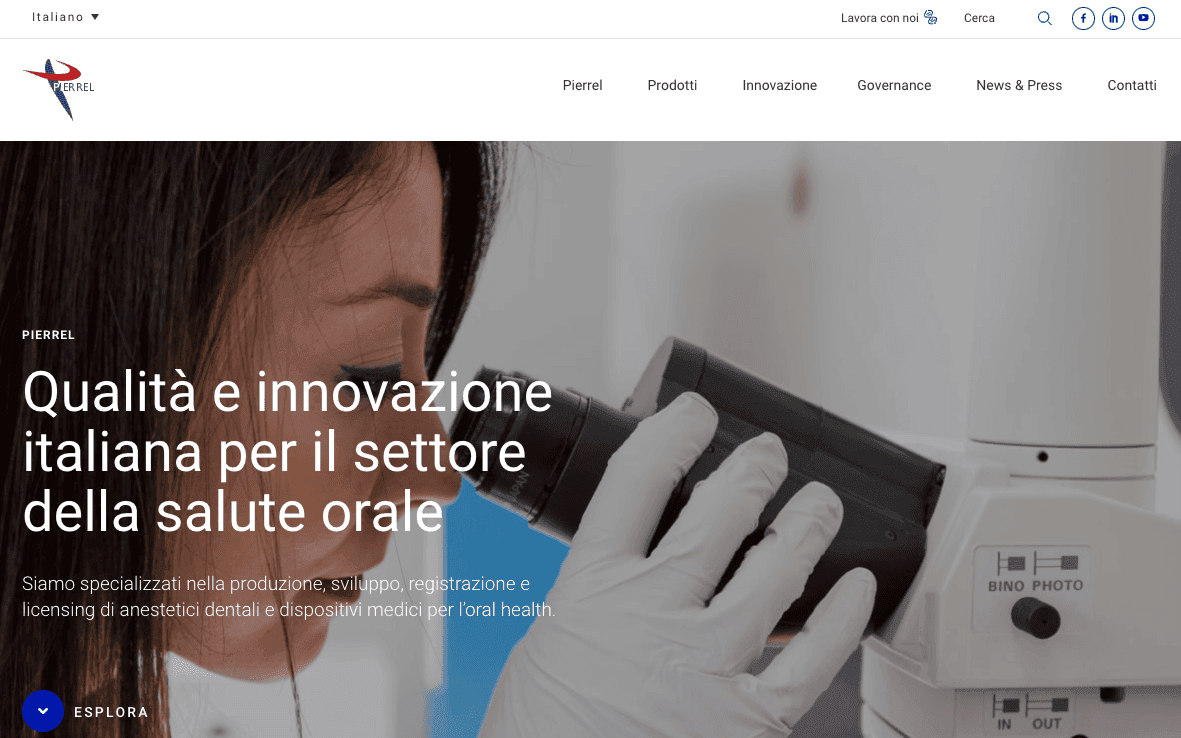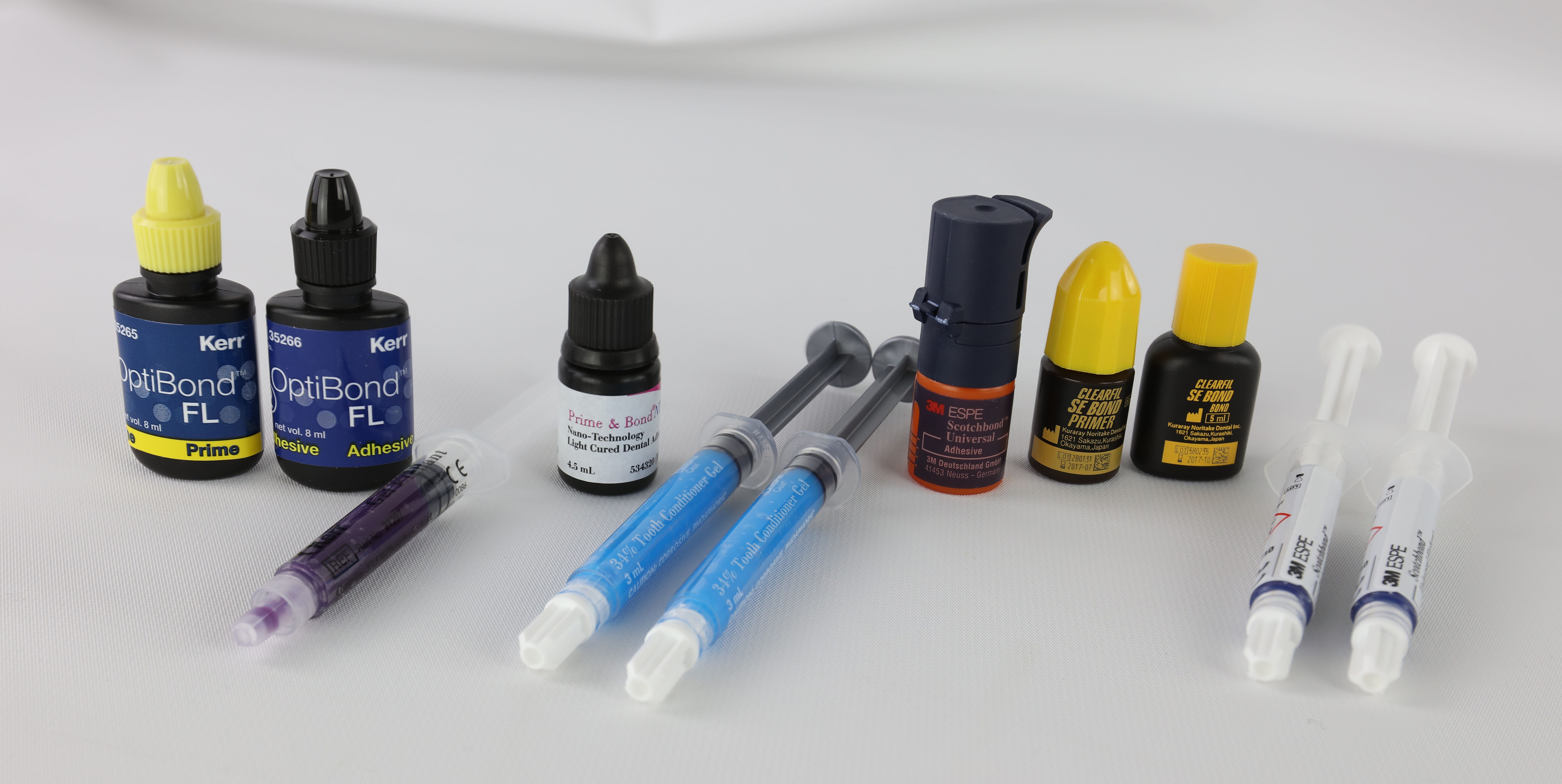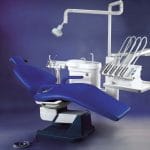Dental bonding agents have revolutionized modern dentistry, offering the crucial link between tooth structure and restorative materials. These vital products have the potential to completely transform the way dental professionals approach restorations and patient care. As we look ahead to 2025, selecting the right supplier for bonding agents is more critical than ever for dental practices aiming to deliver optimal results and achieve long-lasting restorations.
However, before making the decision to switch to a new bonding agent supplier, dental professionals need to consider several factors to maximize their investment. In this article, we will explore the top dental bonding agent manufacturers and provide insights to help you make an informed choice for your practice.
Overview
The global dental bonding agents market continues to experience steady growth, driven by increasing demand for cosmetic dentistry and advancements in adhesive technology. As of 2025, the market is projected to reach $29.13 billion, with a compound annual growth rate (CAGR) of 8.01% from 2024 to 2030. This growth is fueled by rising awareness of oral health, an aging population, and the continuous development of innovative bonding solutions.
Top Dental Bonding Agents Suppliers
Kuraray Noritake Dental
Kuraray Noritake Dental is a global leader in the development and manufacture of innovative dental materials, with a particular focus on high-performance dental bonding agents and adhesive systems.
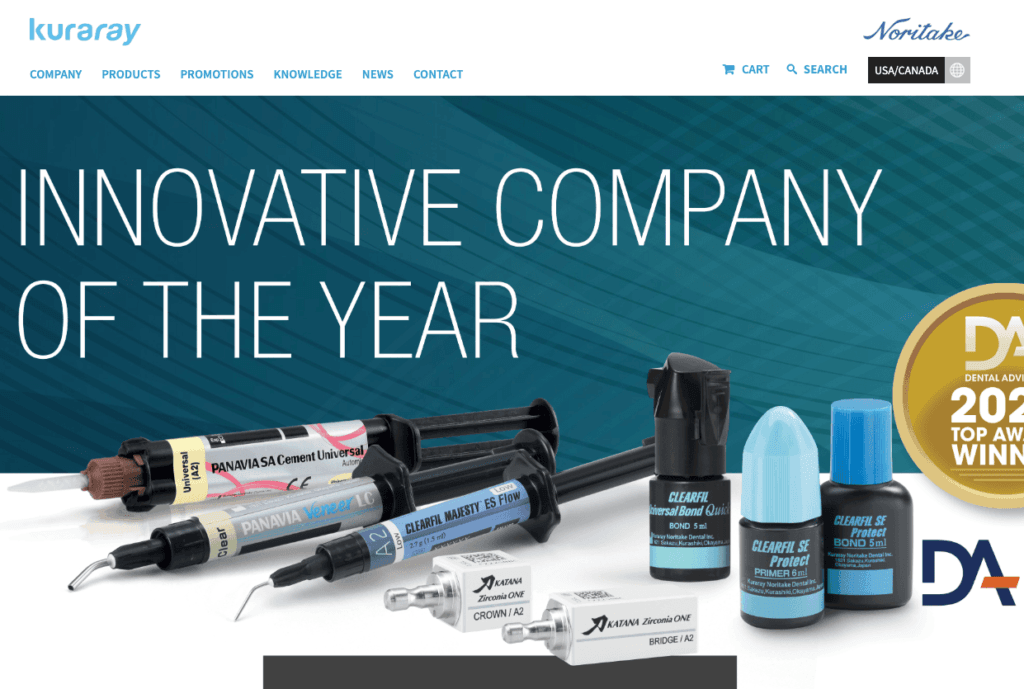
Website: www.kuraraynoritake.com
Business Type: Development, production, and sale of dental materials and equipment
Headquarters: Tokyo, Japan
Main Product: CLEARFIL line of dental bonding agents and adhesives
Main Markets: Global, with strong presence in Japan, North America, Europe, and Asia
Establishment Year: 2012 (through merger of Kuraray Medical Inc. and Noritake Dental Supply Co., Limited)
Certificates/Awards: Innovative Company of the Year 2024 by DENTAL ADVISOR
Kuraray Noritake Dental leads the field of adhesive dentistry, leveraging its deep knowledge in organic and inorganic chemistry. The company’s CLEARFIL line, launched in 1978 with CLEARFIL BOND SYSTEM-F, has set benchmarks for dental adhesive systems. Their innovative MDP monomer technology, used in products like PANAVIA cement and CLEARFIL UNIVERSAL BOND QUICK, has enhanced bonding durability in challenging oral environments.
With production sites in Niigata and Miyoshi, Japan, Kuraray Noritake Dental has shown robust growth, expanding over 10% annually. A recent ¥2.2 billion investment in the Miyoshi Plant will boost inorganic materials output to 490 tons yearly, showcasing the company’s dedication to meeting rising demand. This growth strengthens Kuraray Noritake Dental’s capacity to provide dental professionals globally with top-tier adhesives, composites, cements, and CAD/CAM materials.
Kuraray Noritake Dental’s core strength lies in its focus on innovation and quality. By merging Kuraray’s organic expertise with Noritake’s inorganic prowess, the company delivers comprehensive dental treatment solutions. Their products, renowned for user-friendliness and consistent lab performance, are go-to choices for lasting clinical outcomes. As adhesive dentistry trailblazers, Kuraray Noritake Dental continues to push industry boundaries, emphasizing minimally invasive and bio-additive approaches that boost patient results and support long-term oral health.
3M Oral Care
3M Oral Care is a global leader in innovative dental and orthodontic solutions, renowned for its cutting-edge products that promote lifelong oral health.
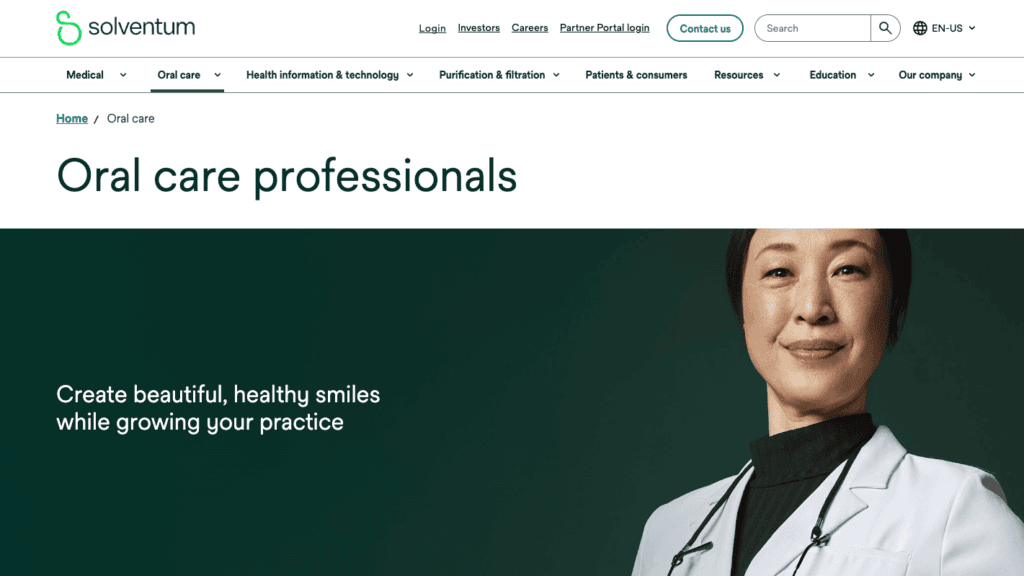
Website: www.3m.com/3M/en_US/oral-care-us/
Business Type: Manufacturer and supplier of dental and orthodontic products
Headquarters: St. Paul, Minnesota, United States
Main Product: Scotchbond Universal Plus Adhesive
Main Markets: Global, with a strong presence in North America, Europe, and Asia
Establishment Year: 1902 (as Minnesota Mining and Manufacturing Company)
Certificates/Awards: Named most innovative company in the dental industry worldwide for 11 consecutive years
3M Oral Care leads the dental industry with cutting-edge adhesive solutions and bonding technologies that streamline procedures and yield consistent clinical results. Their premier offering, Scotchbond Universal Plus Adhesive, showcases 3M’s dedication to innovation, providing dental professionals a versatile tooth bonding agent that adheres effectively to a wide range of dental surfaces and materials.
With over 100 years of expertise, 3M Oral Care continually advances dental science through groundbreaking innovations. Their R&D efforts have produced revolutionary products like the APC Flash-Free Adhesive, which utilizes nanotechnology to enhance orthodontic bonding efficiency. This innovative spirit permeates their entire product range, from restorative compounds to cements and polishing systems, all engineered to boost dental treatment efficacy.
3M Oral Care’s success stems from its scientific prowess and keen understanding of dentists’ needs. By fusing materials science, surface modification, and biochemistry, the company develops dental adhesives that surpass industry benchmarks. Their focus on sustainability and ongoing improvement ensures dental practices globally can depend on 3M for advanced solutions that enhance patient care and optimize clinical processes.
BISCO Dental Products
BISCO Dental Products is a leading innovator and manufacturer in the dental adhesive and restorative materials industry, renowned for its cutting-edge solutions in aesthetic dentistry.

Website: www.bisco.com
Business Type: Manufacturer of dental materials and equipment
Headquarters: Schaumburg, Illinois, USA
Main Product: Advanced dental bonding agents and adhesive systems
Main Markets: United States and over 60 countries worldwide
Establishment Year: 1981
Certificates/Awards: ISO 13485 certified manufacturer
BISCO leads the dental industry in adhesive and resin composite innovation, leveraging cutting-edge research facilities and in-house manufacturing to create groundbreaking aesthetic and restorative solutions. For over 40 years, the company has pushed the boundaries of dental material technology, consistently delivering products that enhance clinical outcomes and patient satisfaction.
At the heart of BISCO’s offerings are advanced dental bonding systems like ALL-BOND®, ONE-STEP®, and All-Bond Universal®, which exemplify the company’s commitment to improving adhesion strength and restoration durability. A multidisciplinary team of experts, including chemists, material scientists, and practicing dentists, drives BISCO’s relentless pursuit of next-generation dental adhesives that address the complex challenges of modern dentistry. The company’s rigorous development process, spanning up to five years, involves comprehensive testing, practitioner input, and strict biocompatibility standards, ensuring BISCO’s dental adhesive products consistently surpass industry expectations for quality and performance.
Shofu Dental Corporation
Shofu Dental Corporation is a world-renowned manufacturer and supplier of high-quality dental materials and equipment, with a strong focus on innovative adhesive solutions for dental professionals.
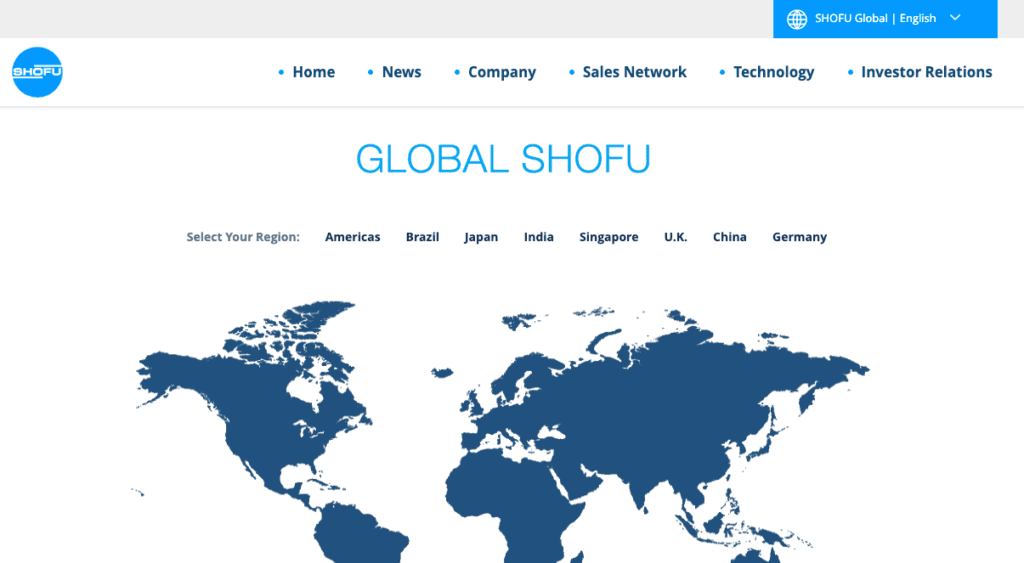
Website: www.shofu.com
Business Type: Dental materials and equipment manufacturing
Headquarters: San Marcos, California, USA
Main Product: BeautiBond Xtreme universal bonding agent
Main Markets: United States, Canada, Central & South America, Mexico
Establishment Year: 1922 (parent company in Japan), 1971 (US subsidiary)
Certificates/Awards: ISO 14001 certification
Shofu Dental Corporation, a trailblazer in oral care innovation, has revolutionized dental adhesive technology for over 100 years. As a subsidiary of Shofu Inc., this San Marcos, California-based company excels in crafting cutting-edge dental adhesives and restorative materials. Their flagship product, BeautiBond Xtreme, exemplifies their commitment to advanced tooth bonding solutions.
BeautiBond Xtreme, a state-of-the-art universal dental adhesive, boasts proprietary Quad-Adhesive Technology for robust attachment to diverse oral substrates. This groundbreaking formula enables single-layer application, yielding swift, durable bonds with an ultra-thin 5μm film that eliminates marginal staining. Versatile for both direct and indirect restorations, it adheres effectively to enamel, dentin, zirconia, precious metals, composites, and glass ceramics.
Shofu’s unwavering focus on R&D drives continuous product innovation beyond dental bonding agents. Their comprehensive portfolio includes artificial teeth, abrasives, metals, cements, and an array of dental equipment. With a state-of-the-art facility housing extensive inventory, Shofu ensures efficient customer service and swift deliveries across the Americas.
As an industry leader in dental adhesive systems, Shofu Dental Corporation combines innovation, quality, and reliability. Their dedication to enhancing oral care through superior tooth-bonding technologies establishes them as a trusted ally for dental professionals aiming to deliver exceptional patient outcomes.
Kerr Dental
Kerr Dental stands as a global leader in dental restorative solutions, with a particular focus on innovative dental bonding agents and adhesive systems.

Website: www.kerrdental.com
Business Type: Manufacturer and supplier of dental products and equipment
Headquarters: Brea, California, United States
Main Product: OptiBond™ family of dental bonding agents
Main Markets: North America, Europe, Middle East, Africa, and global dental markets
Establishment Year: 1891
Certificates/Awards: Multiple Dental Advisor awards for various products, including OptiBond XTR (2017 Product Award for long-term performance in the Bonding Agent category)
Kerr Dental stands as a pioneer in dental innovation, crafting advanced adhesive technologies for over 130 years. Their OptiBond™ line exemplifies excellence in restorative dentistry, simplifying procedures and enhancing patient outcomes. The OptiBond™ Universal 360 showcases Kerr’s commitment to versatility, offering a single-bottle solution compatible with various etching protocols for both direct and indirect restorations. Its unique formulation, featuring patented monomers and a ternary solvent system, reduces technique sensitivity without sacrificing bond strength.
Collaboration with dental experts ensures Kerr’s products, including their cutting-edge dental sealants, are scientifically robust and clinically practical. Manufacturing facilities across North America and Europe uphold stringent quality standards, producing tooth bonding materials trusted globally. Kerr Dental’s strength lies in merging scientific innovation with user-friendly design. The OptiBond™ range adapts to diverse clinical needs, from moisture-tolerant formulas to self-curing options when combined with dual-cure resins. This adaptability, paired with Kerr’s reputation for quality, makes them a top choice for dentists seeking reliable dental adhesive systems that consistently deliver long-lasting results.
Comparison of Dental Bonding Agents Suppliers
| Supplier | Key Product | Generation | Etching Technique | Bond Strength to Dentin (MPa) | Cost per ML |
|---|---|---|---|---|---|
| Kuraray | CLEARFIL SE BOND | 6th | Self-etch | 32.5 | $12.50 |
| 3M | Scotchbond Universal | 7th | Universal | 26.8 | $15.00 |
| BISCO | All-Bond Universal | 7th | Universal | 34.2 | $13.75 |
| Shofu | BeautiBond | 7th | Self-etch | 29.7 | $14.25 |
| Kerr | OptiBond XTR | 6th | Self-etch | 31.5 | $13.00 |
Note: Bond strength and cost data are approximate and may vary based on specific studies and market conditions.
Latest advancements in dental adhesive technology
Dental adhesive technology has undergone remarkable progress recently, enhancing bond strength, streamlining application, and boosting long-term clinical outcomes. Key innovations in this field include:
Universal Adhesives: These cutting-edge bonding systems offer multi-mode application flexibility, simplified single-bottle solutions, and improved formulations with functional monomers like 10-MDP for stronger chemical bonding.
Bioactive Components: Research is focusing on integrating antibacterial properties, remineralization capabilities, and enzyme inhibitors to combat hybrid layer degradation.
Nanotechnology: Nanofillers are improving mechanical strength and durability, while enhancing microscopic adaptation and enabling smart, pH-responsive materials.
Biomimetic Approaches: New adhesive systems aim to mimic natural tooth structure, improving biocompatibility and matching mechanical properties more closely.
Physicomechanical Advancements: Recent formulations boast reduced oxygen inhibition layers, higher conversion rates, and increased hardness for enhanced durability.
Future Trends: The industry is moving towards HEMA-free formulations, self-adhesive restoratives, and bioactive molecules for remineralization and antibacterial effects.
These breakthroughs are paving the way for more reliable, durable, and biocompatible bonding systems that simplify clinical procedures and improve patient outcomes. As research progresses, we can anticipate further enhancements in dental adhesive performance and versatility.
Dental Adhesive Systems: Self-Etch vs. Total-Etch
Self-etch and total-etch bonding approaches represent two key strategies in modern adhesive dentistry, each with unique characteristics and clinical applications. This comprehensive overview examines the distinctions between these systems:
Bonding Mechanism
Total-Etch Method
- Employs 32-37% phosphoric acid as a separate etching step
- Eliminates the smear layer completely
- Produces a deep, micro-roughened enamel surface
- Reveals the collagen network in dentin
- Generates a substantial hybrid layer (4-5 μm)
Self-Etch Technique
- Integrates etching and priming using acidic monomers
- Alters rather than removes the smear layer
- Creates a more shallow etching pattern
- Forms a thinner hybrid layer (0.5-2 μm)
Adhesive Strength
Enamel Bonding
- Total-etch systems typically offer stronger enamel bond strength
- Self-etch systems may show reduced enamel bond strength, particularly on intact enamel
Dentin Bonding
- Total-etch systems exhibit variable dentin bond strength
- Self-etch systems often provide more consistent dentin bond strength
Technique Sensitivity
Total-Etch
- Highly sensitive to technique
- Demands precise moisture control
- Risks over-etching or excessive drying
Self-Etch
- Less technique-sensitive
- Doesn’t require critical moisture management
- Yields more predictable outcomes
Post-Treatment Sensitivity
- Total-etch systems carry a higher likelihood of postoperative sensitivity
- Self-etch systems typically result in reduced postoperative sensitivity
Clinical Efficacy
- Both systems can deliver excellent clinical results when applied correctly
- Dual-bottle systems (for both total-etch and self-etch) tend to outperform single-bottle variants
Application Protocol
Total-Etch
- Involves separate etching, rinsing, and drying steps
- More intricate application procedure
Self-Etch
- Eliminates separate etching or rinsing steps
- Streamlined application process
Specific Considerations
- Total-etch systems show higher efficacy on sclerotic dentin
- Self-etch systems may be less effective on enamel and sclerotic dentin
- Some contemporary universal adhesives (mildly acidic, single-bottle systems) perform well in both total-etch and self-etch modes
Both total-etch and self-etch systems play vital roles in contemporary adhesive dentistry. Selecting between them typically depends on the specific clinical scenario, tooth substrate, and practitioner preference. Total-etch systems may be favored for enamel-dominant preparations, while self-etch systems offer benefits in dentin-rich areas and situations prioritizing simplicity and minimized postoperative sensitivity.
Conclusion
The dental bonding agents market in 2025 offers a diverse range of high-quality products from reputable suppliers. When selecting a bonding agent, dental professionals should consider factors such as bond strength, versatility, ease of use, and cost-effectiveness.
Kuraray Noritake Dental and 3M Oral Care continue to lead the market with their innovative products, while companies like BISCO, Shofu, and Kerr offer compelling alternatives with unique features. Ultimately, the choice of bonding agent should align with the specific needs of the dental practice and patient requirements.
As the field of dental adhesives continues to evolve, staying informed about the latest advancements and conducting thorough comparisons will be crucial for dental professionals seeking to provide the best possible care for their patients.
